Makerspace Course Listings
The QEP Makerspace Program focuses on design and making to learn research and entrepreneurship. The makerspace courses facilitate collaborating, creating, learning, and research using the Be A Maker (BeAM) facilities on campus.
MAKERSPACE COURSES
Faculty: Rachel Willis, American Studies
Rising Waters, AMST 460, is an APPLES service-learning seminar focusing on water threats from climate change to port cities, low-lying coastal areas, and land along rivers. Sea-level rise, extreme weather, and inadequate infrastructure all contribute. Fall 2020 our collaborative project will be to develop and produce a prototype of a cloth board game with disaster die and a custom string bag resource kit that enables players to strategize to build more resilient communities. Tentatively titled Climatopia, the game incorporates individual and collective strategies. The Makerspace Labs and training will enable us to design, sew the kits, game boards, and make the custom disaster dice, policy cards, and other game pieces while learning about the challenges of rising waters due to climate change.
Offered: Fall 2020
Faculty: Glenn Walters, Applied Physical Sciences
Faculty: Richard Goldberg, Applied Physical Sciences
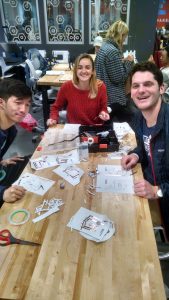 Design thinking is a popular buzz term in this age of Kickstarter, instant turnaround, and short time-to-market. But what is design thinking really all about? In many ways, it is a process that most of us were quite familiar with in our preschool years. Observe an opportunity. Take an action. Assess the results. Laugh at the failures. Repeat. In this class we will dissect the design process through an integrated format of discussion and making. We will emphasize that failure and iteration are important concepts that we must embrace in order for “try” to become “do” and for “do” to lead to success.
Design thinking is a popular buzz term in this age of Kickstarter, instant turnaround, and short time-to-market. But what is design thinking really all about? In many ways, it is a process that most of us were quite familiar with in our preschool years. Observe an opportunity. Take an action. Assess the results. Laugh at the failures. Repeat. In this class we will dissect the design process through an integrated format of discussion and making. We will emphasize that failure and iteration are important concepts that we must embrace in order for “try” to become “do” and for “do” to lead to success.
You will learn how to use a variety of makerspace technologies. You will brainstorm, design, and make dozens of artifacts. In the process, you will learn how to identify and work to the strengths of your fellow students and how to form teams dedicated to accomplishment of specific creative tasks. Rapid iterative processing, both mentally and through realization of physical prototypes will be extensively practiced. The most important skill to learn is how to efficiently ideate in a team setting by identifying and overcoming your personal obstacles to rapid, creative action. As humans, we are all creative. Our goal is for you to discover your personal strategies for moving through creative roadblocks in a challenging, fun, and nurturing environment.
Offered:
Fall 2020 Faculty: Richard Goldberg
Spring 2020 Faculty: Glenn Walters
Fall 2019 (Syllabus) Faculty: Glenn Walters
Spring 2019 Faculty: Glenn Walters
Fall 2018 (Syllabus) Faculty: Glenn Walters
Faculty: Richard Goldberg, Applied Physical Sciences
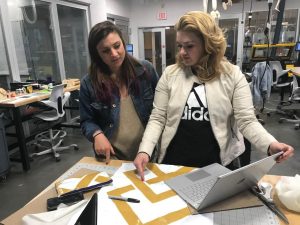
Do you have an entrepreneurial idea and you would like to make a prototype to turn your idea into reality? Or do you want to experience the design and making process? In this class, you will go through this process for a semester-long project. The outcome will be a prototype that meets an entrepreneurial need. Students from any major are welcome to take this class. The pre-requisite is ECON 125, Introduction to Entrepreneurship. Orientation in the BeAM makerspace is also required. This is a great opportunity to apply and further develop your entrepreneurial, design, and making skills!
Offered:
Spring 2020
Spring 2019
Spring 2018 (Syllabus)
Faculty: Lien Truong, Art and Art History
This studio course will focus on the culturally rich practice of creating a narrative painting, and emphasize integrating BeAM space technology, tools and equipment in the creative process. In the course of Maymester, students will create one painting through their own personal lens, addressing topics that include social, cultural or scientific themes. Narrative paintings have mirrored social and scientific advancements, such as Thomas Eakins’ medical narrative paintings The Gross Clinic, 1875, and The Agnew Clinic, 1889 (pictured). Students will be guided through the creative process; from concept and design, to technological and handmade fabrication using various BeAM tools and equipment, and completing the work in the painting studio at Hanes Art Center.
Offered: Maymester 2018
Faculty: Maggie Cao, Art and Art History
Clay, wood, cloth, glass, steel, and plastic. We interact with these materials every day, but rarely do we think about their properties and histories. This course explores the history and technology of materials and the ways they have impacted art, culture, and science. The course fully integrates historical scholarship and experiential making. Students engage both with the physical and chemical properties of materials through hands-on manipulation and fabrication at BeAM, studios, and laboratories across campus and study the historical and with theoretical debates surrounding material invention and use by artists, architects, scientists, and industries. How did the artisanal race to produce Asian porcelain in the eighteenth-century West impact the history of globalization? How did the wide adoption of plate glass in modern architecture alter social relations in the built environment? How will 3D printing technologies expand the potential uses of plastics in realms from fashion to weaponry?
Offered: Spring 2018 (Syllabus)
Faculty: Laura Miller, Biology
The focus of this First Year Seminar is to describe organisms living within moving fluids using both mathematical and physical models. The natural world is replete with examples of animals and plants whose shape influences flow to their benefit. For example, the shape of a maple seed generates lift to allow for farther dispersal. The structure of a pinecone helps it to filter pollen from the air. A falcon’s form during a dive reduces drag and allows it to reach greater speeds. The course is highly geared towards individual projects, and students will choose between a focus on numerical simulation or experimental fluid dynamics with quantitative or qualitative analyses of the flow data. For physical modeling projects, students will 3D physical models of organisms for flow visualization and quantification. For mathematical modeling projects, students may take advantage of 3D scanning and photogrammetry to construct models of organs and organisms that will be used in numerical simulations. Other students may really get their hands wet and build facilities to visualize the flows around real organisms such as jellyfish and corals.
Offered:
Fall 2019
Spring 2019 (taught as MATH 060 FYS: Simulated Life)
Faculty: Jennifer Coble, Biology
This course, designed for future high school science teachers, aims to develop the knowledge and skills teachers need to implement student-centered and conceptually focused science instruction. The major project for the course is designing lessons for a topic in the biology curriculum that allows high school students to engage in student-centered and hands-on exploration. Since much of the biology curriculum focuses on abstract biochemical and cellular topics, a central component of lesson design is creating models in the BeAM spaces on campus that allow students to envision and conceptualize the abstract topics. As a part of BIOL 410, students spend two hours each week serving as a TA in a local science classroom. Thus, the BIOL 410 students would have the opportunity to get feedback on their models from their host teacher and his/her high school students.
Offered:
Spring 2020
Fall 2019
Spring 2019
Fall 2018
Spring 2018
Fall 2017 (Syllabus)
Faculty: Brian Hogan, Chemistry
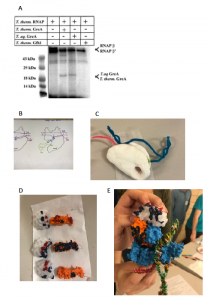 Macromolecular Structure and Metabolism is an upper-level chemistry course required for all B.S. chemistry (biochemistry track) majors. The course focuses on the experimental application of biochemistry. Analyzing current primary literature articles related to macromolecular structure and metabolism provides students with an experimental framework to analyze, synthesize and evaluate protein structure-function relationships. A core tenant within all biological sciences is structure determines function. As a result, to understand how a molecular mechanism functions, one must explore the three-dimensional structures of complex and dynamic molecules that are not visible with even the most powerful electron microscope.
Macromolecular Structure and Metabolism is an upper-level chemistry course required for all B.S. chemistry (biochemistry track) majors. The course focuses on the experimental application of biochemistry. Analyzing current primary literature articles related to macromolecular structure and metabolism provides students with an experimental framework to analyze, synthesize and evaluate protein structure-function relationships. A core tenant within all biological sciences is structure determines function. As a result, to understand how a molecular mechanism functions, one must explore the three-dimensional structures of complex and dynamic molecules that are not visible with even the most powerful electron microscope.
Offered:
Fall 2019
Fall 2018
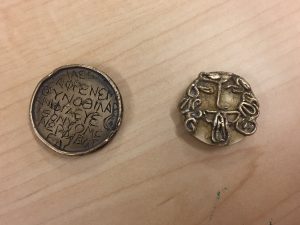 Faculty: Suzanne Lye, Classics
Faculty: Suzanne Lye, Classics
Bindings and curses, love charms and healing potions, amulets and talismans – from simple spells to complex group rituals, ancient societies made use of both magic and religion to try to influence the world around them. In this course, we shall examine the roles of magic and religion in the ancient Greek and Roman worlds, paying special attention to their local contexts and to the myths and actual techniques ancient practitioners used to serve their clientele.
In this class, we examine descriptions of religious and magical practices in the multicultural contexts of ancient Greece and Rome. Additionally, we create replicas of ancient objects as a way to investigate the materials and usability of objects related to ancient religious and magical practices. Our sources include literary accounts, legal 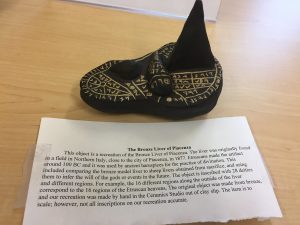 documents, and material objects, such as inscriptions, amulets, tablets, magical images, and papyri.
documents, and material objects, such as inscriptions, amulets, tablets, magical images, and papyri.
Offered:
Spring 2020
Spring 2019
Faculty: Bill Brown, Communication; Sabine Gruffat, Art and Art History
Over the semester, students will learn about the history and science of cinema through lectures and readings while delving into the principles of photography, movie film, movie cameras, and movie projectors. They will explore the wonderful world of pre-cinematic optical toys by designing and fabricating a zoetrope, a pre-cinema optical device that creates simple animated effects. They will use digital modeling software to fabricate a pinhole camera, and will use the darkroom to hand-process the photographic images they make. They will use the laser cutter to etch their own 16mm movie film, and will explore the transformation of serial still images into motion pictures. They will design and create a toy cinematograph, a rudimentary movie projector, and learn how movies move. Through these projects, students may invent new cinematic machines that we have not yet begun to imagine, and that are made possible with the use of the innovative tools at BeAM.
Offered:
Spring 2020
Spring 2019
Spring 2018 (Syllabus)
Faculty: Suzanne Gulledge, School of Education
What does it mean to be an educated person? What function do schools serve? This seminar builds on the experiences of schooling that students bring to the university. In an innovative update to the pedagogy of this popular First Year Seminar, it will now feature design thinking and use of “makerspaces” as a way for students to “actualize” their ideas and learning about how schooling can be updated and revised to better meet the aims of “real” education in the Twenty-first Century and beyond. The seminar includes readings, speakers and experiences as stimuli for them to engineer new paradigms, approaches, structures and tools for education of the future. Students are challenged to re-consider and de-construct what they know about education and schools as a result of those experiences and then re-conceptualize, redesign and create their new vision for schooling as educative in new ways. The seminar considers traditional schooling along with non-traditional and international approaches to educating youngsters. There are no pre-requisites for this class. Students’ first-hand knowledge and experiences combined with a critical perspective will encourage innovative thinking about ways and places of learning with the aim of generating proposals for new or reformed schools and new forms of public education for the future through collaboration, making and design thinking.
Offered:
Spring 2020
Fall 2019
Spring 2019
Faculty: Alison LaGarry, School of Education
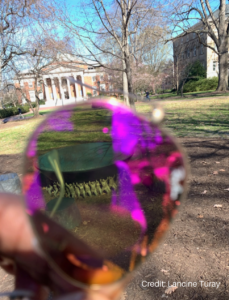 In this course, we ask the following questions: What is art? What is the role of art(s) in schooling? Who does art? Who has access to art? What are the tools necessary to “make” art? How can art open spaces of critique, reconciliation, and cultural affirmation? There is a significant amount of time spent creating and making art that seeks to influence social change. No art experience or expertise is needed. When we’re not making things, the class is discussion-based and always takes into account the experiences of students in the room. A favorite assignment in the course is the Identity Playlist, where students share songs that have shaped their perspectives and experiences.
In this course, we ask the following questions: What is art? What is the role of art(s) in schooling? Who does art? Who has access to art? What are the tools necessary to “make” art? How can art open spaces of critique, reconciliation, and cultural affirmation? There is a significant amount of time spent creating and making art that seeks to influence social change. No art experience or expertise is needed. When we’re not making things, the class is discussion-based and always takes into account the experiences of students in the room. A favorite assignment in the course is the Identity Playlist, where students share songs that have shaped their perspectives and experiences.
Offered:
Spring 2021
Faculty: Kristin Papoi, School of Education
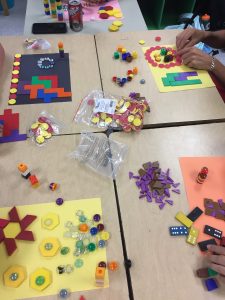 Whether or not you plan to pursue a career in education, each person has some connection with schools—either as a former student, parent or caregiver, friend, neighbor, or engaged community member. The role of public schools is integral to the success of a democratic society, and this course provides you an opportunity to think about schools and their role in our lives. Together, we will examine the history of community-based public schooling, and delve deeply into thematic topics of considerable relevance to today’s classrooms. Special attention will be paid to the close connections between learning, community, culture, and youth identity and to the positioning of historically marginalized communities and families in schools, particularly students with culturally and linguistically diverse backgrounds that aren’t necessarily privileged in schools as an institution. Through multimodal expression, we will pay particular attention to our own educational histories and our positioning with respect to race, class, gender, sexual diversity, and linguistic competence/language use. Linked to a community-based field experience in a local school, this course will engage the affordances of making as a language to: explore the nature of learning as it exists in and beyond the classroom walls; examine ways in which educators and community members might work most effectively with communities and families to create connected learning environments; live out commitments to social justice and equity; and, engage communities to become transformative leaders in the American education system. This is an APPLES course with 30 hours of service learning.
Whether or not you plan to pursue a career in education, each person has some connection with schools—either as a former student, parent or caregiver, friend, neighbor, or engaged community member. The role of public schools is integral to the success of a democratic society, and this course provides you an opportunity to think about schools and their role in our lives. Together, we will examine the history of community-based public schooling, and delve deeply into thematic topics of considerable relevance to today’s classrooms. Special attention will be paid to the close connections between learning, community, culture, and youth identity and to the positioning of historically marginalized communities and families in schools, particularly students with culturally and linguistically diverse backgrounds that aren’t necessarily privileged in schools as an institution. Through multimodal expression, we will pay particular attention to our own educational histories and our positioning with respect to race, class, gender, sexual diversity, and linguistic competence/language use. Linked to a community-based field experience in a local school, this course will engage the affordances of making as a language to: explore the nature of learning as it exists in and beyond the classroom walls; examine ways in which educators and community members might work most effectively with communities and families to create connected learning environments; live out commitments to social justice and equity; and, engage communities to become transformative leaders in the American education system. This is an APPLES course with 30 hours of service learning.
Offered:
Fall 2019
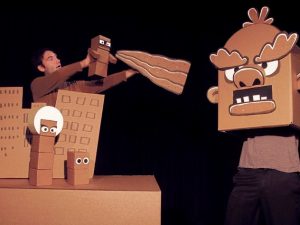 Faculty: Marianne Gingher, English
Faculty: Marianne Gingher, English
Here’s an academic alternative to running away and joining a circus. Writing for the Puppet Stage emphasizes puppetry arts as an expression of literary craft, and offers the student an immersive experience in writing, designing, and producing a theatrical project from initial concept to physical execution. The course breaks new ground in that puppetry arts have never had a significant presence on the UNC campus. The goals of the class are to:
- introduce students to the marvelously diverse and magical world of puppet theater, its history and its narrative possibilities
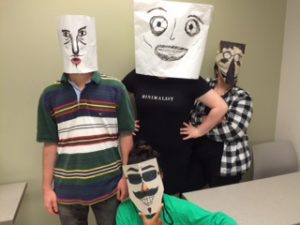 offer students a writing-intensive course (similar to Play Writing) but with a hands-on experiential component resulting in the material creation of puppets
offer students a writing-intensive course (similar to Play Writing) but with a hands-on experiential component resulting in the material creation of puppets- provide guidance in basic scene, plot, and character development, culminating in dramatic scripts acted by puppets
- explore a simple but strategic question: Why puppets instead of actors?
Hand puppets (including glove, stick, and rod puppets) as well as masks will be vehicles for expression, and scripting puppet entertainments will be presented both as a craft to be learned and as an art to be experienced. Makers Space training and use will be a vital part of the course as students explore innovative techniques and strategies for building simple lightweight puppets from recyclables (such as cardboard) that incorporate moveable 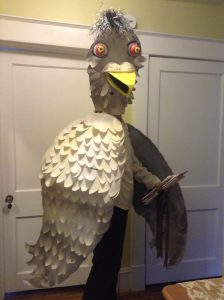 parts (i.e., a flapping wing, rolling eyes, kicking leg, etc.), designing sets with mechanical components (like a “crankie”) and costuming. The course will culminate in a public puppet performance that showcases making and original writing.
parts (i.e., a flapping wing, rolling eyes, kicking leg, etc.), designing sets with mechanical components (like a “crankie”) and costuming. The course will culminate in a public puppet performance that showcases making and original writing.
Offered:
Fall 2019 (Syllabus)
- For more information read Marianne Gingher Offers First-Year Seminar on the Puppet Stage.
Faculty: Megan Plenge, Geological Sciences
Which option below best describes what students do in introductory geology class?
- Identify 50 or more rock and mineral samples
- Design a model and experiment that can be used to generate or interpret data
Did you choose “a”? You’re not alone- most people think of rocks when they think of geology. Geology is not just the study of rocks, however- it is the study of the Earth as a whole, and the complex processes that shape and change it throughout time. This course aims to teach the fundamentals of geology: making observations of the natural world, using observations and inferences to formulate a scientific question, developing a testable hypothesis that answers that question, and testing the hypothesis.
Earth systems are so complex that geologist often rely on models to design experiments and/or interpret their data. Students will use the Makerspace as part of their experimental design process. For example, some students use the 3D printer to create volcanoes so that they can see how the shape of the volcano might change over time due to lava flows. Others might use a model to illustrate the data they’ve collected; for example, creating a model that shows the shape of the Atlantic Ocean 100,000 years from now based on the rates of plate movement seen today.
Offered:
Spring 2019
Fall 2018
Faculty: Gabriela Valdivia, Geography
Faculty: Gosia Lee, Romance Studies
Faculty: Susan Harbage Page, Women’s and Gender Studies
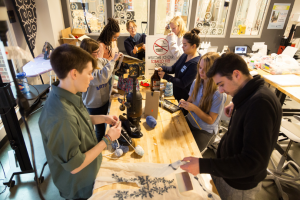 In this Ideas, Information, and Inquire (III) course, students use design and making to learn about life in Latin America. The course is taught by a visual artist, a Spanish teacher, and a geographer and will cover topics such as border-crossings, well-being, and socio-environmental justice through Spanish language-based films and artwork. Students will engage with and create their own films and art through individual and collaborative assignments that involve performance, creative design, and fabrication. The assignments seek to forge connections between the arts, humanities, and sciences. Students will create e-portfolios to feature their creations and the skills gained to a broader audience.
In this Ideas, Information, and Inquire (III) course, students use design and making to learn about life in Latin America. The course is taught by a visual artist, a Spanish teacher, and a geographer and will cover topics such as border-crossings, well-being, and socio-environmental justice through Spanish language-based films and artwork. Students will engage with and create their own films and art through individual and collaborative assignments that involve performance, creative design, and fabrication. The assignments seek to forge connections between the arts, humanities, and sciences. Students will create e-portfolios to feature their creations and the skills gained to a broader audience.
Offered:
Fall 2019 (Syllabus)
Faculty: Alecia Septer, Marine Science
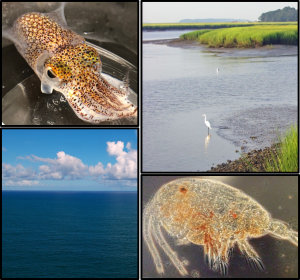 This class is intended for students interested in learning how organisms live and interact in the marine environment. Through a combination of lectures, discussions, and active-learning exercises, students first learn about the diverse organisms living in marine environments. From single-celled phytoplankton to sea birds and marine mammals, students learn about the special physiological adaptations each organism uses to live in their marine habitat. Next, students learn more about the diverse habitats and interactions among co-occurring organisms in marine environments ranging from deep sea to our own Carolina coast. Finally, students will use their new knowledge about functional biology, ecology, and biodiversity to describe a newly discovered organism. This “Creature Design” project will allow students to integrate the concepts learned throughout the semester to design their creature, while learning important problem solving skills through the process of design.
This class is intended for students interested in learning how organisms live and interact in the marine environment. Through a combination of lectures, discussions, and active-learning exercises, students first learn about the diverse organisms living in marine environments. From single-celled phytoplankton to sea birds and marine mammals, students learn about the special physiological adaptations each organism uses to live in their marine habitat. Next, students learn more about the diverse habitats and interactions among co-occurring organisms in marine environments ranging from deep sea to our own Carolina coast. Finally, students will use their new knowledge about functional biology, ecology, and biodiversity to describe a newly discovered organism. This “Creature Design” project will allow students to integrate the concepts learned throughout the semester to design their creature, while learning important problem solving skills through the process of design.
Offered:
Spring 2020
Faculty: Anne MacNeil, Music (MUSC 063)
Faculty: Marc Callahan, Music (MUSC 212)
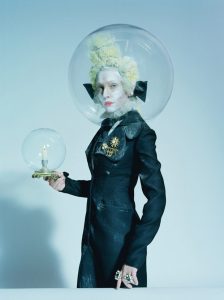 UNC Opera is teaming up with first year seminar “Music on Stage and Screen” for an exciting production of Wolfgang Amadeus Mozart’s opera Il Sogno di Scipione. The opera takes its story from Cicero’s Dream of Scipio (Somnium Scipionis) and transforms that world into a playful, absurdist dream at the dawn of the space race. We will explore representations of dreams, geometry, surrealism and absurdism in art and literature to inspire our production’s design and create the sets, props, lighting and costumes. In addition to classical singers, we are also looking for creators, stage managers, costumers, props-makers, dreamers and anyone for an imagination for design and crafting!”
UNC Opera is teaming up with first year seminar “Music on Stage and Screen” for an exciting production of Wolfgang Amadeus Mozart’s opera Il Sogno di Scipione. The opera takes its story from Cicero’s Dream of Scipio (Somnium Scipionis) and transforms that world into a playful, absurdist dream at the dawn of the space race. We will explore representations of dreams, geometry, surrealism and absurdism in art and literature to inspire our production’s design and create the sets, props, lighting and costumes. In addition to classical singers, we are also looking for creators, stage managers, costumers, props-makers, dreamers and anyone for an imagination for design and crafting!”
Offered:
Fall 2019 (MUSC063 Syllabus) (MUSC 212 Syllabus)
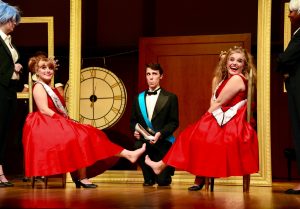
Faculty: Rachel Penton, Psychology & Neuroscience
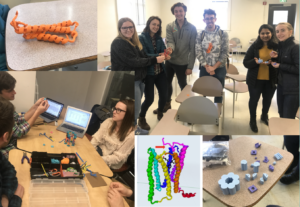 Are you interested in printing a 3D model of a neurotransmitter-gated receptor and being able to hold it? Doing a deep dive into learning how to read difficult neuroscientific papers? NSCI 405 students can do both in a process-focused course that combines a semester-long Makerspace group project to design concrete 3D models of structures and concepts with a detailed study of the mechanisms of drug action at the molecular level using an in-depth analysis of primary literature. The content focus of the course will be ligand-receptor interactions and modulation of receptor number, structure, and function by drugs. Detailed examples will examine the molecular details of both ligand-gated ion channels and G-protein coupled receptors.
Are you interested in printing a 3D model of a neurotransmitter-gated receptor and being able to hold it? Doing a deep dive into learning how to read difficult neuroscientific papers? NSCI 405 students can do both in a process-focused course that combines a semester-long Makerspace group project to design concrete 3D models of structures and concepts with a detailed study of the mechanisms of drug action at the molecular level using an in-depth analysis of primary literature. The content focus of the course will be ligand-receptor interactions and modulation of receptor number, structure, and function by drugs. Detailed examples will examine the molecular details of both ligand-gated ion channels and G-protein coupled receptors.
I aim to engage students in science and discovery and help to develop critical thinking skills, analytical skills, creative skills, and a general interest/passion for science. The course is focused on the process of learning and the function of failure and iteration. Many of the processes we use in the class will be applicable in your general life and in your future scientific plans.
Offered:
Spring 2021
Faculty: Jennifer Weinberg-Wolf, Physics and Astronomy
The course uses everyday mechanisms or activities, which students are typically familiar with, to teach physics concepts in the broad areas of mechanics (e.g., walking/running, cars, carnival rides), thermodynamics (e.g., ovens and air conditioners), electricity and magnetism (e.g., microwave ovens, radio), and light (e.g., lasers, light bulbs, color wheels). A signature aspect of the course is to design and construct a time-keeping device in the BeAM spaces on campus with a strong artistic element. The clock has had the single greatest impact in history on the creation and advancement of science. The incorporation of this project draws a critical connection between the human drive to create time, and the use of time to create science.
Offered:
Fall 2020 Faculty: Jennifer Weinberg-Wolf
Fall 2019 Faculty: Jennifer Weinberg-Wolf (Syllabus)
Fall 2017 Faculty: Stefan Jeglinski (Syllabus)
Faculty: Viji Sathy, Psychology and Neuroscience
How do you persuade others with numbers? What general principles should you think about when sharing data with others? What are the common biases and fallacies that we have in understanding numbers and statistics? How do you figure out if you should trust results from research studies reported in the media? This seminar introduces students to the many ways that data are reported to the public in our everyday lives-through advertising and media as well as scientific journal articles. Students in this course will create models in the BeAM spaces on campus that will help make abstract topics about numbers more concrete. Students will learn practical skills that will be useful in subsequent classes at Carolina and after graduation (e.g., in graduate school, in work, as a consumer, as a citizen).
Offered:
Spring 2020
Spring 2019
Faculty: Vicki Chanon, Psychology
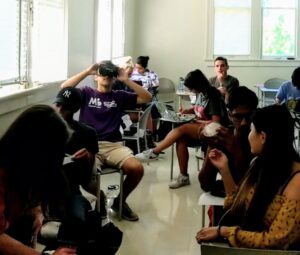 Introduction to Cognitive Science, studies the nature of cognition by drawing on the knowledge and approaches of different disciplines including, psychology, computer science, linguistics, and philosophy. While our Cognitive Psychology course focuses more on the faculties of the mind such as memory, attention, decision making, etc., this Cognitive Science course instead has a greater focus on philosophy of mind, artificial intelligence, technology and human-computer interaction. In this course you will have the opportunity to explore and gain experience in careers that use Cognitive Science including the quickly growing field of User Experience (UX) Design by working on your own UX design prototypes in the Makespace.
Introduction to Cognitive Science, studies the nature of cognition by drawing on the knowledge and approaches of different disciplines including, psychology, computer science, linguistics, and philosophy. While our Cognitive Psychology course focuses more on the faculties of the mind such as memory, attention, decision making, etc., this Cognitive Science course instead has a greater focus on philosophy of mind, artificial intelligence, technology and human-computer interaction. In this course you will have the opportunity to explore and gain experience in careers that use Cognitive Science including the quickly growing field of User Experience (UX) Design by working on your own UX design prototypes in the Makespace.
Offered:
Spring 2021
Faculty: Marsha Penner, Psychology and Neuroscience
Students work in pairs or small groups, taking turns designing hands-on activities that illustrate fundamental concepts in neuroscience to the general public. In a single semester in this service-learning course, the class presents at 40-45 events in the community. The objectives of Neural Connections (PSYC424) are three-fold: 1) to learn neuroscience concepts through the design, creation, and use of hands-on activities fabricated in the BeAM spaces on campus, 2) to communicate neuroscience concepts to a wide audience through engagement with these activities, 3) to promote inclusivity in science. Our class motto is “Science is for everyone, and everyone is a scientist”.
Offered:
Spring 2019
Spring 2018 (Syllabus)
[/toggle]
Faculty: Heather Knorr, Romance Studies
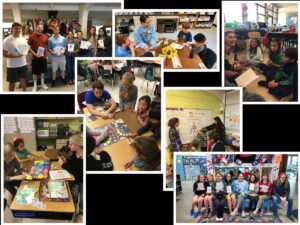 ¡Vamos a crear! Students will create bilingual (Spanish-English) children’s books and hands-on projects to accompany them which will will later take to the Centro hispano in Carrboro to donate to their budding preschool library! This project will encourage students to consider how they will interact with immigrant communities within the context of their future professions, and to help them explore and establish methods of approaching and engaging with these communities in a respectful and culturally appropriate manner.
¡Vamos a crear! Students will create bilingual (Spanish-English) children’s books and hands-on projects to accompany them which will will later take to the Centro hispano in Carrboro to donate to their budding preschool library! This project will encourage students to consider how they will interact with immigrant communities within the context of their future professions, and to help them explore and establish methods of approaching and engaging with these communities in a respectful and culturally appropriate manner.
Along with our creations, we will trace the history of Latin American immigration to the US and analyze the motives for and methods of immigration, economic status, social standing, generational differences and unique regional characteristics among the Latin Americans living in our communities today. In addition to the time spent in the BeAM Makerspace, students will complete part of their 30 hours for the 1 credit APPLES component in the local community. Recent APPLES service-learning projects have included volunteering with ISLA immersion, school, Farmer Foodshare, Kidzu museum, Orange Co. Department on Aging, El Centro hispano, the Mexican Consulate in Raleigh, Carrboro Elementary Dual-Language students, and Rainbow Soccer. Prerequisite: SPAN 324, 325 or 328. For more information, please email Professor Knorr knorrh@email.unc.edu ¡Nos vemos en el Makerspace!
Offered:
Spring 2021
Fall 2020






